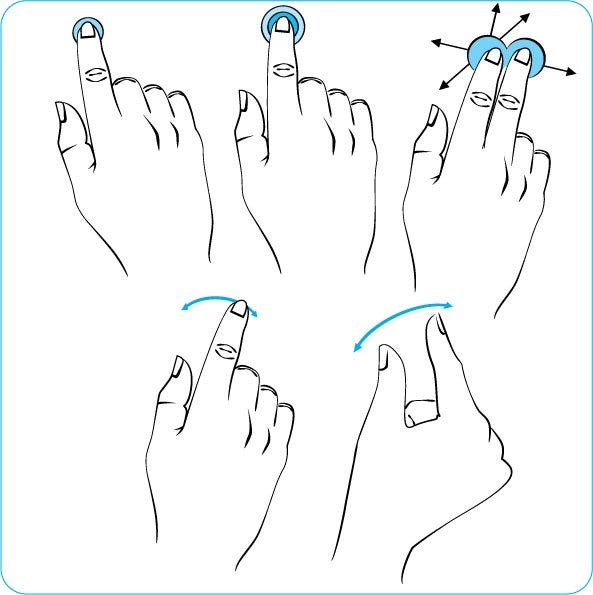By Dr. Farouk Zabel, Principal Touch Panel Technologist and Vice President of Strategic Business Development for Europe at New Vision Display
One of the biggest advantages projected capacitive touchscreen technology has over other touch technologies (especially resistive touch) is the capability to support the recognition of two or more distinct touches. This is why many OEMs who designcapacitive touch sensors into their products,want to have this magical feature called “multi-touch”.
However, very few applications actually requirea user interface that supports true multi-touch. For example, I have been using a smart phone for years and I can’t remember a single instance when I needed more than two fingers to operate any feature or game on that phone. Even the two-finger operation is limited to the zoom function. Therefore, it’s important to consider the scope of the product’s UIwhen designing a projected capacitive touch sensor and defining its specification. This way, OEMs canavoid designing-in an expensive touch panel, when one at a lower cost would be fully sufficient.
Here is an overview of the capacitive touch panel designs used in varioususer interfaces, and their performance related to the number of touches and supported gestures. The designs are listed according to their cost starting from lowest to highest.
- Icon-Based User Interface:
This type of UI utilizes predefined touch areas distributed over the screen. Within these touch areas are icons that display on the screen, often in varying menu screens. Gestures such as swiping or scrolling are not supported. The corresponding sensorsonly require a single layer of ITO with a predefined button layout and a simple button-type controller with limited input pins depending on the number of buttons.
- Low-Resolution, Single-Touch,Gestures in One Direction Only:
With this type of UI, single touches can be sensed anywhere on the screen, not just on predefined areas. It’s suitable for devices which typically don’t display pictures that require a zoom feature, but still need single touch gesture support for scrolling or swiping. This type of interface is commonly found in industrial and household applications, remote controls, and consumer medical devices. Here, the sensor can also be realized by a single layer of ITO, typically employing a triangle or backgammon pattern.Reliable gesture recognition is supported by this pattern only in one direction, i.e. either vertically or horizontally. It requires a simple capacitive touch controller with the number of inputs depending on the screen size. Typically, these types of sensors are limited toapproximately 4” diagonal.

New Vision Display is a custom LCD, OLED display and capacitive touch screen manufacturer based out of Roseville, CA. For more information, please visit www.newvisiondisplay.com.
Article Source: https://goo.gl/BHDhdc
No comments:
Post a Comment